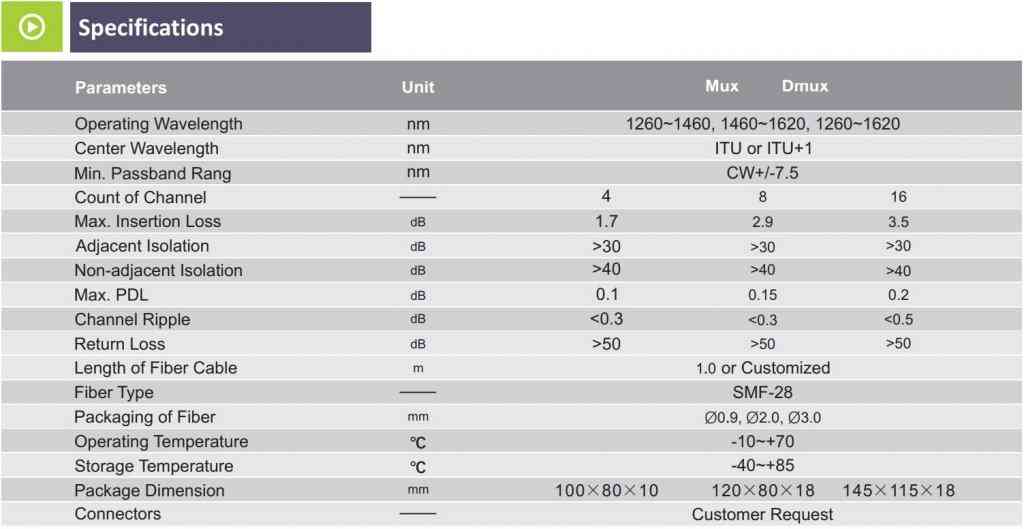CWDM is a low-cost WDM transmission technology for the access layer of metro networks. In principle, CWDM uses optical multiplexers to multiplex optical signals of different wavelengths into a single fiber for transmission, and at the receiving end of the link, the mixed signals in the fiber are decomposed into signals of different wavelengths with the help of optical demultiplexers and connected to the corresponding receiving devices.
FWDM is based on environmentally stable thin film filter technology. The devices combine or separate light at different wavelength in a wide wavelength range. They offer very low insertion loss, low polarization dependence, high isolation and excellent environmental stability. High power handling capability can be achieved through unique pigtail processing and high quality AR coating. These components have been extensively used in EDFAs, Raman amplifiers, WDM networks and fiber optical instruments.
DWDM is an optical fiber multiplexing technology that increases the bandwidth of fiber networks. DWDM combines data signals from sources over a single pair of optical fibers and it maintains separation of the data streams. A separate light wavelength carries each signal. The IETF states that: “A network slice is programmable and has the ability to expose its capabilities.” DWDM or dense WDM can have up to 128 channels with 37.5GHz spacing of each channel. Those channels can be up to 400G or greater but may need wider spacing depending on how far you want to go. While at the same time they can be amplified for long distances.
Features:
- Wide bandwidth
- Low insertion loss
- High channel isolation
- Exceptional reliability and stability









Reviews
There are no reviews yet.